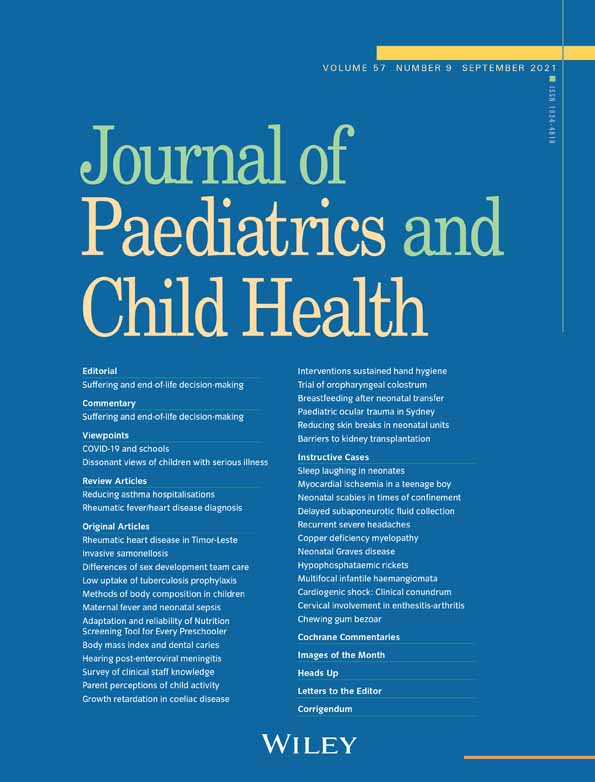Role of cross-campus multidisciplinary team meetings in decision-making for children and adolescents with differences of sex development/intersex
Conflict of interest: None declared.
Abstract
Aim
Management of children with differences/disorders of sex development (DSD) is complex with limited evidence to guide clinical decisions. Regular multidisciplinary team meetings were set up in Sydney and Melbourne paediatric hospitals to enable systematic peer review of complex decision-making. We aim to describe the workload and role of these meetings.
Methods
The multidisciplinary team forum includes invited representatives from endocrinology, urology, gynaecology, genetics, psychology, social work, clinical ethics, laboratory and hospital executive and meetings occur 1–3 times monthly. Descriptive data were collected from de-identified meeting referrals and minutes between August 2012 to August 2018 (Sydney) and January 2014 to August 2018 (Melbourne).
Results
A total of 192 referrals (142 new and 50 follow-ups) aged 1 week to 17 years were discussed across the two sites. 46, XY DSD (n = 81) was the most common sub-classification. Consideration of surgical options and optimal management of gonads with malignant potential were amongst the common reasons for referral to the multidisciplinary team meetings. Surgical interventions were considered but not recommended after review for 38 of 154 (24.7%) procedures. Gonad retention to allow potential functional benefit was recommended in 15/46 (32.6%) referrals. Evidence of premalignant or malignant changes was found in 20/57 (35%) gonads removed, with dysgenetic features and atrophy/streak features in 6 (10.5%) and 27 (47.4%) gonads respectively.
Conclusion
Formal DSD multidisciplinary team meetings provide a framework and opportunity for multi and interdisciplinary discussions amongst representatives from several specialities to help make complex decision-making.




